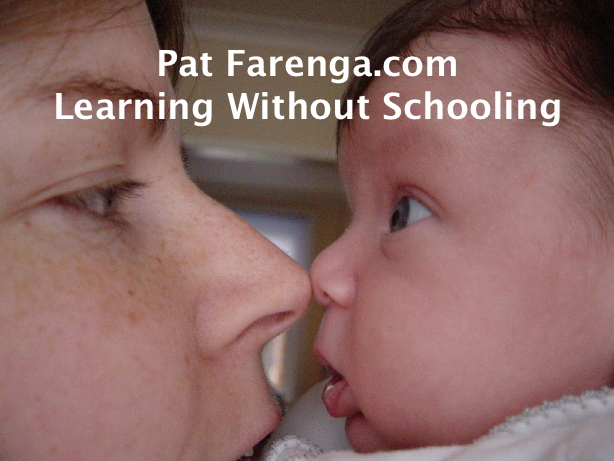John Holt on Children as Scientists, Spelling, and Observing Learning
 Tuesday, June 22, 2010 at 4:36PM
Tuesday, June 22, 2010 at 4:36PM I posted a new segment of the John Holt lecture today. This picks up where the previous one, about children learning pronouns, ended. The opening is a bit disjointed, so let me fill in the gap: John is referring to the girl he described earlier who correctly learned to use pronouns by making knowledge out of her experience of using words. John then compares this process to what scientists do in their work.
Besides some good insights into how and why children learn, you can also hear John offer some advice that might seem unlike Holt, namely if you use a quiz or curriculum because it makes you comfortable, then that’s okay because that benefit outweighs philosophical concerns. As John says, “If you worry less your kids will worry less…”
John earlier described how children often don’t know what they know, and how it takes a long time for some children to realize they actually know how to read or solve a math problem on their own. Change occurs gradually for adults too, and John’s empathy is born from his own experience: he was a superstar classroom teacher who gradually learned that great teaching techniques are not enough for helping people learn. So it is with us homeschoolers: we can eventually learn to trust our children to learn in their own ways, but we have to give ourselves time and permission to learn how to do that with each one of our children.
Learning is a natural process that can easily become muddled by unnecessary interventions, no matter how well intentioned. Being worried and uptight about children’s learning seems to be the default position for most parents and schools; this video clip shows an alternative. There’s John talking about all the clever things he did to help kids learn to spell in his fifth grade class, and then saying he doubted any of it was really necessary. In the video you can hear children playing and John observing and commenting about them, providing ample evidence that children are active, joyful learners who want to be part of adult activities but in their own ways. The ease John displays with this audience of children and adults shows us another way we can engage in helping people learn without making all parties feel uptight and worried that they aren’t learning enough or teaching properly. Here are the words that John uses to end this segment; I think they’re worth repeating.
“There is no way to meddle with or speed it up [i.e. the process of children learning—PF] without doing damage to them… I’ve been saying this to the schools for over twenty years and got absolutely nowhere. So I’m saying it to what I take to be a more serious audience, with a stronger commitment to success, namely homeschoolers. I don’t necessarily expect that everyone’s going to walk out of the room thinking that I’m right. But I want you to be sensitive to the kinds of experiences which will confirm this for you. So if you see your kids doing some of these things, you think, “Maybe John is right.” I don’t particularly ask you to take it on faith but I do ask you to do what I did, which is to observe your children learning with these ideas in mind.”
 Pat |
Pat |  Post a Comment |
Post a Comment |  How children learn,
How children learn,  John Holt video in
John Holt video in  John Holt,
John Holt,  Unschooling
Unschooling 
